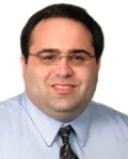Beauty
Do Eyebrows Grow Back?
What the research says about eyebrow regrowth.
Posted August 9, 2018 Reviewed by Jessica Schrader
The importance of eyebrows for aesthetics and facial expressions is obvious. Many people would find it unsettling to either lack eyebrows or have eyebrows that are abnormal in some way.
You may have heard that if you shave your eyebrows, they may not grow back. In fact, physicians have long been taught to avoid shaving eyebrows while suturing because the brow may not grow back or it may grow back abnormally. (Depending on location, shaving off portions of the eyebrow can help with visualization during laceration repair.) But is this guidance correct or is it a canard?
Various medical texts have long warned of shaving eyebrows. For example, the authors of Tintinalli’s Emergency Medicine wrote the following: “Hair should never be removed from the eyebrows or at the hairline because potential for impaired or abnormal growth.”

Shaved eyebrows grow back normally, according to the results of a small study published in JAMA Facial Plastic Surgery.
In the study, researchers shaved off a single brow in five people and left the other brow intact for comparison. The investigators then assessed eyebrow regrowth during a period of six months and took pictures during each follow-up visit—at one month, four months, and, if needed, six months. Final photographs were judged by two masked observers to see whether the observers could distinguish which eyebrow was originally shaved off.
Eyebrows of all five adult participants (three men; average age = 39.2 years) grew back, and in final photographs taken at either four or six months, the masked observers could not reliably differentiate between eyebrows that were originally shaved off and those that were left as controls.
In one 52-year-old female participant with lighter-colored, sparser eyebrows, it took longer for the shaved eyebrow to grow back—a full six months. In the other four participants, however, brows had fully regrown—with no asymmetry or contour change—by four months. Moreover, the participants themselves reported no differences between regrown and intact eyebrows. Of interest, younger participants with fuller brows experienced the fastest regrowth.
Although the sample size of this study is too small to assert with certainty that it is safe to shave eyebrows, the evidence suggests that shaved eyebrows grow back to their original form. In all fairness, it would probably be challenging to find a large number of participants who would willingly have one of their eyebrows shaved off for the sake of posterity.
In a 2015 review article from Emergency Medicine, the authors also question the veracity of the long-held claim that shaved eyebrows may not grow back.
“In our extensive and thorough review of the literature, we did not find a single article supporting the common teaching that eyebrow shaving was occasionally associated with failure of regeneration,” wrote the reviewers. “While there are numerous conditions associated with failure of eyebrow growth, there was not a single reported case of eyebrow growth failure due to shaving.”
Therefore, the fear that shaved brows don’t grow back is likely a myth. All good myths, however, contain some vestige of truth. In the case of shaved brows not growing back, this concern could be based on the fact that brow hairs do grow back more slowly than does scalp hair. Specifically, brow hair grows back at a rate of between 0.14 and 0.16 mm per day; whereas, scalp hairs grow back at a rate of between 0.32 and 0.41 mm per day.
Brow loss is associated with certain medical conditions, including hypothyroidism, seborrheic dermatitis, autoimmune conditions, and cancer, and in patients with these conditions, it’s probably a bad idea to shave eyebrows unless absolutely necessary.
Finally, on a related note, it should be noted that it is unclear according to the literature whether plucking brow hairs affects future hair growth in some way. Few people actually shave their brows for beauty reasons, and have them plucked, waxed, or threaded instead.


